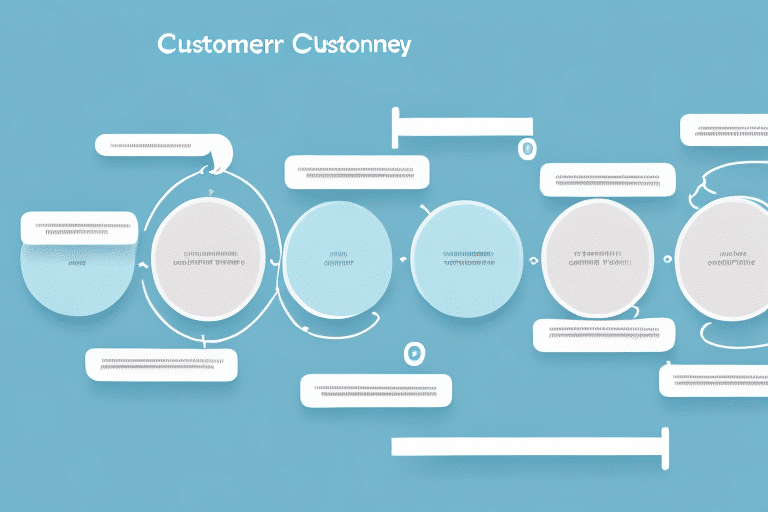Importance of Customer Retention
Customer retention is a cornerstone for sustainable business growth. Studies show that it costs five times more to acquire a new customer than to retain an existing one. Moreover, repeat customers spend approximately 67% more than new customers, data from MyClientSuccess.
Beyond cost efficiency, loyal customers are more likely to advocate for your brand, leading to organic growth through word-of-mouth marketing. This advocacy not only enhances brand reputation but also attracts new customers without the hefty marketing expenses.
Investing in customer retention strategies not only fosters a stable revenue stream but also builds a resilient brand that can withstand market fluctuations.
Understanding Your Target Audience
Identifying Customer Needs and Preferences
Gaining a deep understanding of your target audience is essential for effective retention. Techniques such as surveys, analyzing customer feedback, and monitoring purchasing behavior provide valuable insights into customer preferences and needs.
Addressing Pain Points and Challenges
By identifying and addressing the specific challenges your customers face, you can develop solutions that enhance their experience with your brand. This proactive approach fosters loyalty and encourages repeat business.
Analyzing Competitor Strategies
Keeping an eye on competitors allows you to identify gaps in their offerings and capitalize on opportunities to differentiate your brand. Offering unique value propositions tailored to your audience can set you apart in a crowded market.
Measuring Customer Retention
Key Metrics to Track
- Customer Satisfaction (CSAT): Measures how satisfied customers are with your products or services.
- Repeat Purchase Rate: The percentage of customers who make multiple purchases.
- Customer Lifetime Value (CLV): The total revenue a business can expect from a single customer account.
- Churn Rate: The rate at which customers stop doing business with you.
Understanding Churn Reasons
Conducting exit surveys and analyzing customer feedback helps identify the underlying reasons for churn. Addressing these issues is crucial for improving retention rates.
Developing Effective Retention Strategies
Building a Strong Customer Relationship Management (CRM) System
A robust CRM system is vital for managing customer interactions and tracking behavior. It enables personalized communication and automates repetitive tasks, enhancing efficiency and customer satisfaction.
Creating a Comprehensive Retention Plan
Your retention plan should outline specific strategies aligned with your business objectives. This includes setting clear goals, defining your target audience, crafting tailored messaging, and establishing measurement metrics to monitor progress.
Enhancing Customer Experience
Ensuring a positive customer experience at every touchpoint is paramount. From an intuitive website interface to responsive customer service, every interaction should reinforce the value your brand offers.
Leveraging Technology and Tools for Retention
Utilizing Personalization and Customization
Personalized communication and customized offers significantly enhance customer loyalty. By leveraging data from surveys and feedback forms, you can tailor experiences that resonate with individual preferences.
Implementing Loyalty Programs
Loyalty programs incentivize repeat business by offering rewards such as discounts, exclusive access, or free products. Tracking customer behavior through your CRM allows you to tailor these rewards effectively.
Engaging Through Social Media
Social media platforms offer a dynamic avenue for customer engagement. Sharing relevant content, responding promptly to inquiries, and offering exclusive promotions can strengthen customer relationships. (Sprout Social)
Avoiding Common Pitfalls in Retention Projects
Successful customer retention requires avoiding common mistakes such as inadequate engagement, inconsistent communication, and irrelevant messaging. Additionally, neglecting to analyze key metrics and failing to provide a positive customer experience can derail retention efforts.
To prevent these pitfalls, maintain a clear focus on retention goals, ensure consistent and personalized communication, and regularly monitor key performance indicators to make informed adjustments.
Measuring Success and Continuous Improvement
Tracking Performance Metrics
Regularly monitor metrics like repeat purchase rate, CLV, churn rate, and customer satisfaction to assess the effectiveness of your retention strategies. Utilize analytics tools to gain actionable insights.
Gathering and Acting on Feedback
Continuous improvement relies on actively seeking and acting upon customer feedback. Surveys and feedback forms can reveal areas for enhancement and guide strategic adjustments.
Staying Updated with Industry Trends
Keeping abreast of the latest trends and best practices in customer retention ensures that your strategies remain relevant and effective. Engage with industry publications, attend conferences, and network with professionals to stay informed.
Conclusion: Investing in Customer Retention for Long-Term Growth
Customer retention is not just a strategy but a vital investment in the long-term success of your business. Retained customers contribute to a stable revenue stream, promote your brand organically, and enhance profitability. By implementing comprehensive retention strategies that focus on understanding your audience, leveraging technology, and continuously improving based on feedback, you can foster lasting customer loyalty and drive sustainable business growth.






















